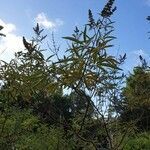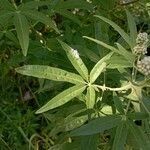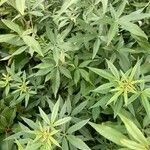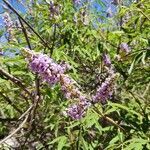A deciduous shrub or tree. It grows 7 m tall. It has an aroma. The leaves are divided. They are greyish-green and silvery underneath. The flowers are showy and lilac or lavender. They are in spikes at the ends of the branches. The fruit is small and fleshy with a stone inside. The fruit are 3 mm across. They are black and in clusters.












